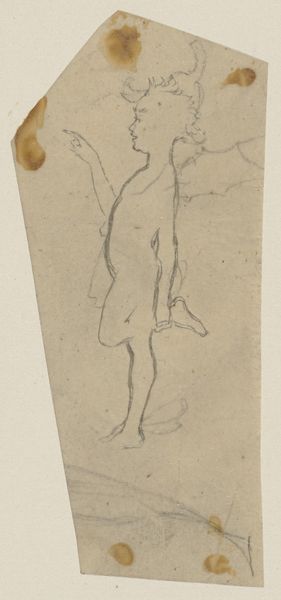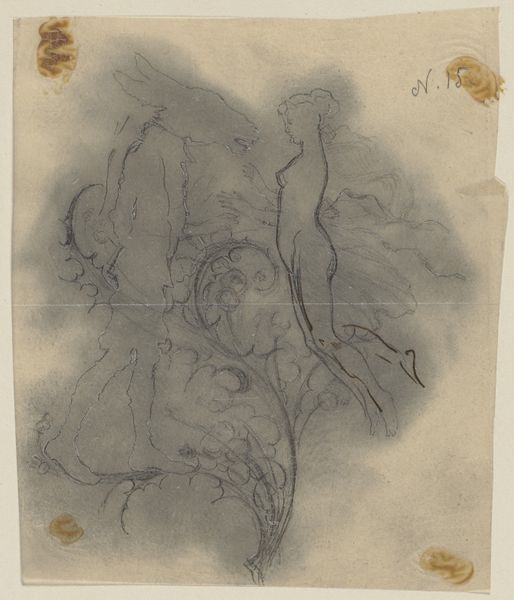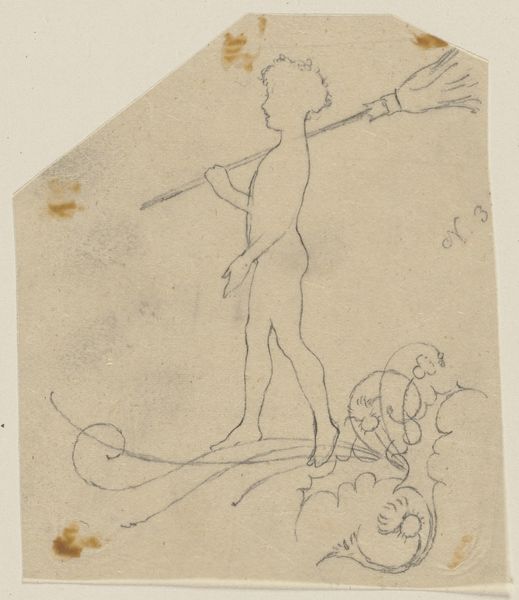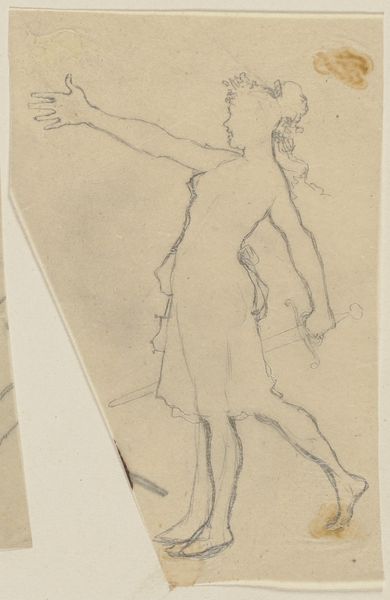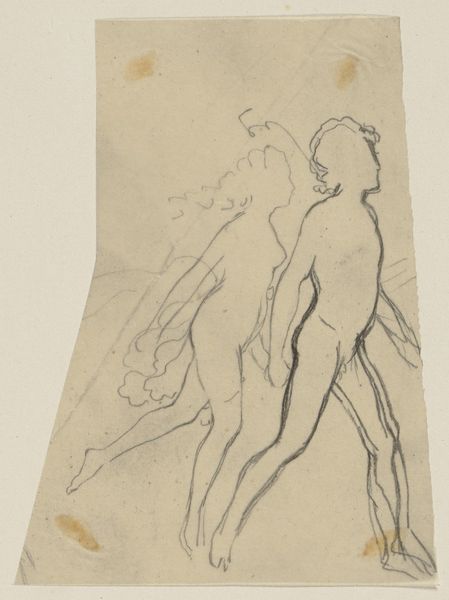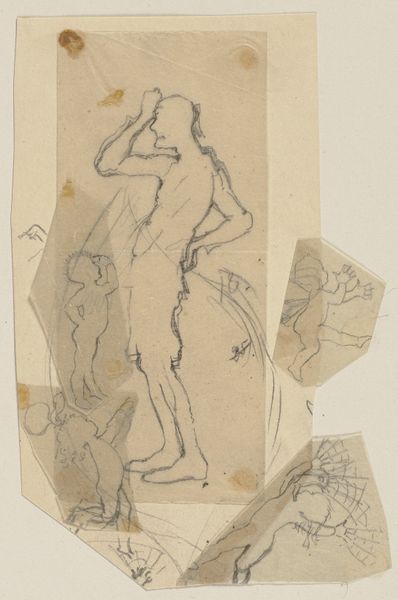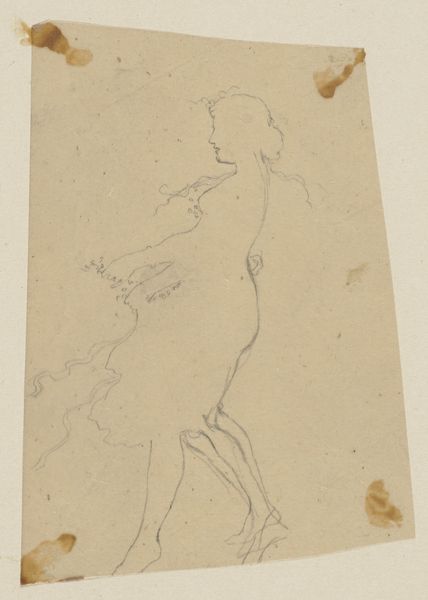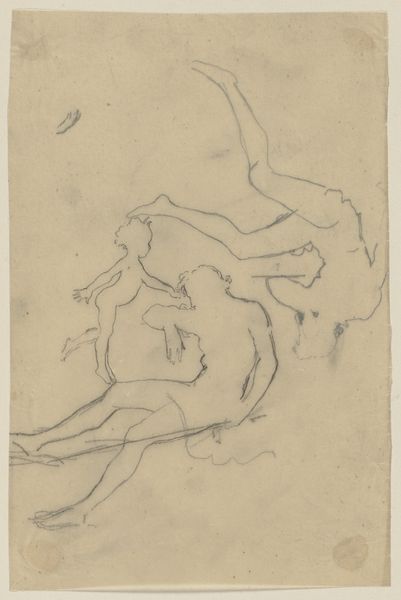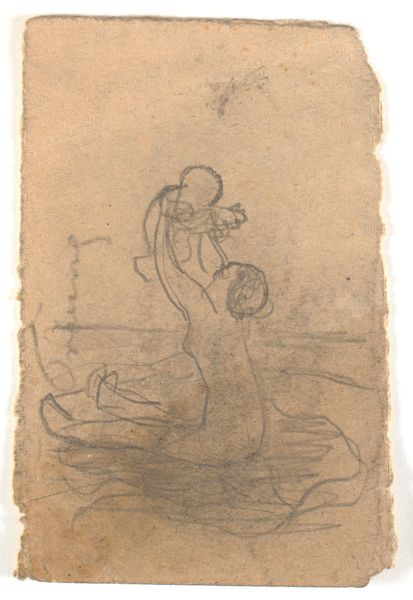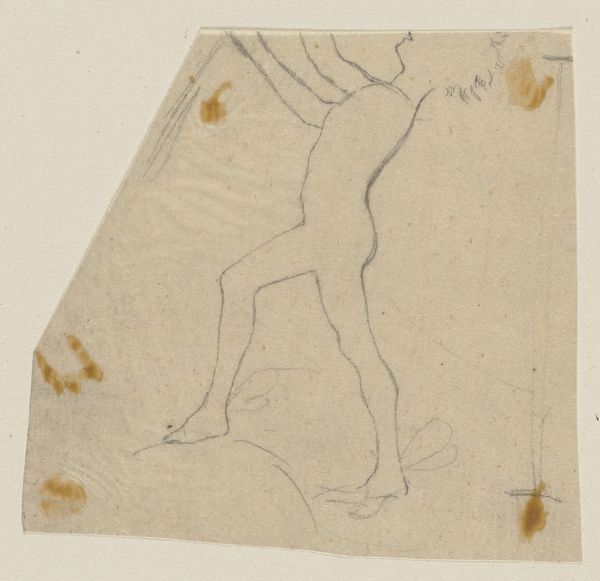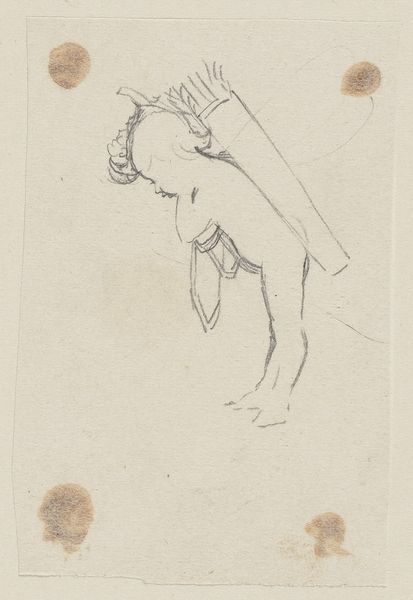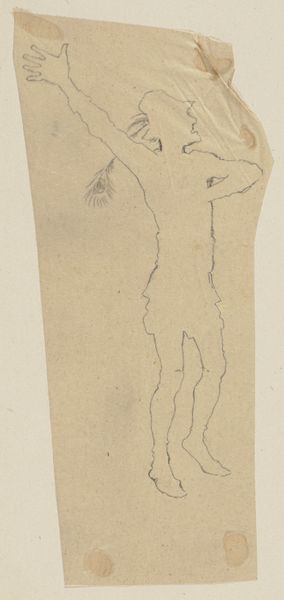
Copyright: Public Domain
Editor: This is Paul Konewka’s "Titania, ein Blumenbouquet tragend, nach rechts," created around 1867-1868, a pencil drawing on paper. It’s a delicate, almost ethereal figure. What compositional elements stand out to you? Curator: Note the deliberate use of line. It's economical, isn't it? See how Konewka implies form and movement with the sparest of marks. Consider, too, the figure's placement within the frame. Editor: I see. The figure isn't centered. Does that placement create tension, or maybe suggest she's in motion, about to exit the scene? Curator: Indeed. It introduces dynamism. Moreover, observe how the lightness of the drawing is integral to the character's portrayal. It’s a formal embodiment of the fantastic. How do you respond to that effect? Editor: It gives her a sense of lightness, like a fairy spirit. It's also interesting how much the eye fills in—how little the artist needs to define to create a whole figure. What effect do the imperfections have on your interpretation? Curator: The imperfections become part of the object, giving it a visual index. The visible surface imperfections, while usually dismissed, become active carriers of meaning by being included in the assessment of value. The purity of line suggests classical form, which contrasts with the real-world, time-worn materiality of the surface it is placed on. Editor: That’s a great observation. Thinking about it that way really changes how I perceive the whole drawing. It’s less about representing something, and more about… interacting with the idea of that thing? Curator: Precisely. Konewka masterfully guides our perception. It is a work rich in nuance and deliberate effect, wouldn't you agree?
Comments
No comments
Be the first to comment and join the conversation on the ultimate creative platform.
